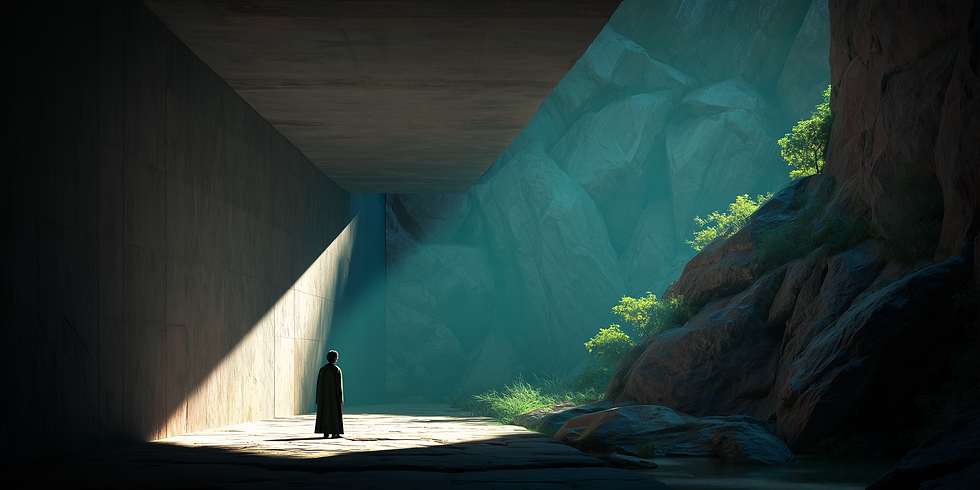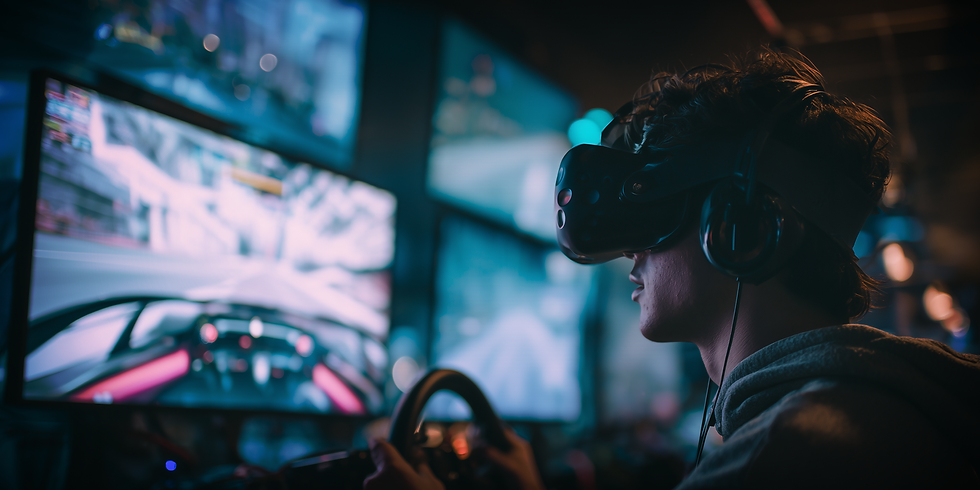Exploring the Future of Interactive Art in Video Games
- artMiker Team

- Nov 2
- 5 min read

For decades, video games have been called “interactive art,” but that phrase is taking on an entirely new meaning. As technology advances, games are moving beyond scripted visuals and branching dialogue trees into worlds that react—not just to a player’s actions, but to their behavior, style, and emotion.
In the next generation of gaming, interactive art won’t just be something you look at or play through; it will be something that looks back at you. It’s a creative frontier where every choice reshapes the narrative, the environment, and even the art itself in real time.
Let’s explore how interactive art is evolving, and what this means for the future of storytelling in video games.
From Static Worlds to Living Canvases
In the early years of gaming, art was static—painted backgrounds, fixed animations, predictable outcomes. Games were more like digital movies where players pressed buttons to move from one frame to the next. But over time, interactivity began to transform the experience.
Games like Journey and Inside blurred the line between gameplay and visual poetry. Every sand ripple, every beam of light, responded intuitively to player movement. These weren’t just mechanics—they were emotional languages, using art to reflect the player’s presence in the world.
As engines like Unreal and Unity evolved, artists gained tools to make environments behave like living organisms. Trees sway when players walk by, shadows stretch differently depending on time of day, and even music shifts with emotional tone. What was once static is now dynamic.
The Rise of Real-Time Environmental Storytelling
Interactive art thrives when environments become storytellers. Imagine a world that changes not because a designer told it to, but because you did something that mattered.
In Red Dead Redemption 2, footprints in the snow linger as quiet reminders of where you’ve been. In Death Stranding, other players’ structures appear in your world as collaborative art—bridges, ladders, and graffiti telling stories of survival and connection. These elements transform landscapes into shared, evolving narratives.
Real-time rendering now allows artists to manipulate every visual element instantly—weather, lighting, texture, and color can shift seamlessly based on context. The result is a sense of co-authorship: players don’t just observe art; they participate in creating it.
As AI becomes more integrated, this dynamic worldbuilding will grow even deeper. Environments may soon respond to emotional cues—altering color tones when players linger, or changing music based on decision-making patterns.
Characters That Feel and React
For storytelling to truly evolve, characters must respond with nuance. Advances in animation, procedural dialogue, and machine learning are making that possible.
Studios like Quantic Dream and Naughty Dog have already pushed boundaries with performance capture and emotional realism. But imagine the next step: AI-driven characters who learn from each interaction, adapting tone and body language organically over time.
If you play aggressively, NPCs could grow fearful; if you show compassion, their posture and speech soften. Art direction becomes dynamic psychology—a living canvas of emotion rather than a fixed animation set.
In the future, every facial expression could be procedurally generated, shaped by hundreds of micro-decisions. The artistry won’t just be in the textures or lighting—it will be in the authenticity of digital emotion.
The Fusion of Art, Code, and Player Intent
Interactive art is now a multidisciplinary collaboration between painters, animators, programmers, and data scientists. The line between art and code is dissolving.
Procedural generation allows artists to define rules rather than static results—essentially painting with algorithms. AI texture tools already interpret brushstrokes and fill gaps intelligently, while physics systems ensure materials behave realistically. But what’s next is deeper: art that evolves with player intent.
Imagine a scene that visually mirrors your moral alignment. A world that grows darker or lighter, more chaotic or serene, based on how you treat others. Not in a binary “good vs. evil” sense, but as a spectrum of tone and composition. The player’s journey becomes the brushstroke.
This is where storytelling becomes experiential art. Designers are no longer just telling stories—they’re creating frameworks that let players author them through action.
The Emotional Layer: When Art Reflects the Player
Interactive art’s greatest promise lies in emotional resonance. Games already use color and music to guide feelings, but future systems will personalize this in real time.
Biosensors and adaptive AI could let games read micro-expressions, heart rate, or reaction times, subtly shifting visuals and pacing. A horror game might dim its lighting or adjust sound design when it senses calmness, constantly staying one step ahead of comfort.
Meanwhile, narrative art could evolve to mirror inner states. Imagine a meditative exploration game where colors change based on breathing patterns or player rhythm—turning art into a feedback loop of emotion and reflection.
This kind of responsiveness transforms the relationship between artist and audience into a dialogue rather than a presentation.
Challenges on the Horizon
Of course, this future isn’t without obstacles. Interactive art relies heavily on data, procedural logic, and AI—all of which raise questions of authorship and ethics.
Who owns the evolving artwork? If an environment changes through a player’s actions, is it still the developer’s creation or the player’s?
Can emotional data be used responsibly? Games reading biofeedback blur privacy boundaries.
Will AI creativity dilute human artistry? If algorithms handle texture, animation, or mood, where does the human touch remain?
The challenge ahead is to ensure technology amplifies artistic intent, not replaces it. Artists must remain the storytellers, using new tools as extensions of imagination rather than shortcuts to automation.
The Role of Artists in the New Era
Far from being replaced, artists will become even more crucial. The next generation of game artists will need to think like worldbuilders and systems designers, crafting logic as elegantly as they paint.
Visual design will merge with behavioral design—an art form that anticipates not only how something looks, but how it reacts, grows, and feels. The artist’s palette will include not just color and composition, but code, physics, and emotion.
This shift is already visible in games like No Man’s Sky and Hades, where visual style evolves dynamically as part of the gameplay loop. The player’s choices literally shape the art direction. It’s no longer about creating beautiful worlds; it’s about creating responsive ones.
A Glimpse Beyond the Horizon
Fast forward a decade: imagine putting on a headset and stepping into a world that knows you. It remembers what you did yesterday. It adjusts its mood to your energy. It even paints new environments based on how you play.
You walk through a forest whose colors pulse with your curiosity. The NPC beside you pauses, noticing hesitation, and the lighting softens as if to encourage you forward. None of this was pre-scripted—it’s the world responding artistically in real time.
That’s not fantasy—it’s where interactive art is heading. As technology continues to evolve, the distinction between artist, developer, and player will fade. Everyone becomes a participant in the act of creation.
Final Thoughts
Interactive art in video games represents the next great evolution of digital storytelling. We’re moving from static, pre-authored worlds to living canvases that respond, adapt, and evolve with every player’s touch.
It’s a future where narrative, design, and emotion merge seamlessly—where art is no longer a backdrop but an active, breathing collaborator.
As tools like AI, VR, and real-time rendering mature, the potential for personalized, emotional experiences will only grow. The question isn’t whether games can be art anymore—it’s how far this art can go when it starts to interact back.
In this new era, players won’t just play stories—they’ll co-create them. And in doing so, they’ll discover something extraordinary: that the most powerful form of art isn’t what we look at, but what responds to us.









Comments